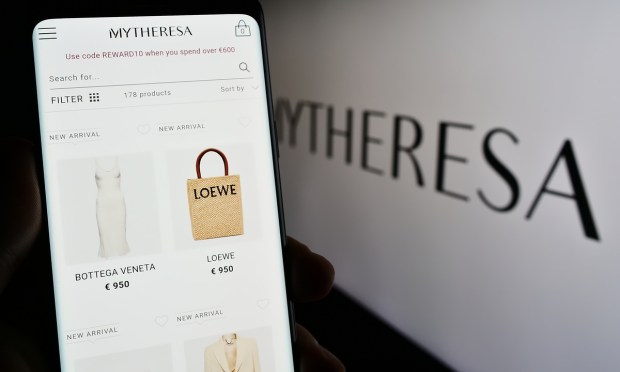Should Brands and Retailers Go All-In With High Spenders?

As the global economy navigates the twists and turns of inflation, brands and retailers are at a checkout counter of decisions: which aisle to stroll down with their marketing efforts.
While the tempting option may be to tailor their strategy toward affluent consumers, who seem to have a knack for navigating economic turbulence, this strategy poses questions about inclusivity, brand fidelity, and the risk of leaving core customers feeling a size too small, especially among the trendsetting younger generations.
Wealthy Consumers in the Spotlight
Wealthy consumers are like the VIP shoppers of the economy, representing a select group but packing a punch in spending power that checks out as a disproportionate percentage of overall consumer expenditures. In fact, the wealthiest one-fifth of Americans account for about two-fifths of all spending.
In times of inflation, these affluent shoppers might just have the retail therapy advantage, given their financial resilience.
Brands and retailers may find it more efficient to focus on wealthy consumers who are less likely to be deterred by rising prices. The affluent demographic tends to have higher disposable incomes, providing a buffer against inflationary pressures. This group may also be less price-sensitive, making them an attractive target for businesses seeking stability in uncertain economic times.
It’s why luxury eCommerce platform MyTheresa, which is already known for its higher price points, has focused on attracting customers with substantial spending capacity.
In fact, the pivot has led the retailer to not only to recover from a minor financial setback, but it also helped it surpass market expectations.
Read more: MyTheresa Pivots to Savvy Shoppers With Serious Spending Power
Challenges of Convincing Other Consumer Segments
Companies like MyTheresa and Gucci have adopted these strategies because encouraging spending from consumers beyond the affluent circle requires a more nuanced approach. This group, often managing tighter budgets, becomes especially price-conscious during inflation.
As a result, retailers must explore the introduction of lower-priced inventory, innovative marketing, offering discounts — a strategy that may not align with their brand — and loyalty programs to attract spending from these demographics — all to create an atmosphere of trust and value. Not to mention, these efforts are more time-consuming than targeting consumers who are financially capable to spend today.
Read also: Retailers Play the Value Card to Capture Consumer Spend
While the affluent demographic presents an appealing target, brands must be cautious about potentially alienating their core customer base. For many businesses, especially those catering to Gen Z and millennials, the core customer often falls within the middle-class income bracket or below. Shifting focus away from these demographics may lead to a loss of brand loyalty.
A prime example of this is Allbirds, which is now in cleanup mode with its product offerings and working its way back to its core customer.
Read more: Allbirds Banks on Holiday Season and Discounts for Recovery
According to PYMNTS Intelligence, 85% of consumers perceive a mismatch between their wages and the pace of inflation. Recent data from September reveals that 62% of consumers harbor concerns about the economy, with an additional 35% acknowledging some degree of worry, leaving a minimal 2.9% claiming to be unconcerned. The sentiment on inflation remains grim, as respondents in the PYMNTS survey foresee a return to pre-COVID inflation levels only well into the latter months of 2024.
Current State of High Spenders
According to a recent PYMNTS report, in the present economy, marked by inflation, credit cards have played a vital role. However, high-spending consumers relying heavily on their credit cards to meet substantial daily expenses now face the challenge of seeking alternative payment methods for necessary goods and services.
As outlined in the “Credit Card Use During Economic Turbulence,” report, a collaborative effort between PYMNTS and Elan Credit Card, the extent of reliance on credit cards by individuals and households becomes evident. In the past six months, one-third of cardholders escalated their proportion of credit card expenditures, while only 15% decreased their spending. Unsurprisingly, the escalation in costs has been a significant factor driving this shift towards increased card usage.
We classify high spenders as consumers who use credit cards for at least 40% of their monthly expenses. A considerable 38% of consumers fall into this category, with 12% of them consistently or usually maintaining a revolving balance between statements. Additionally, 26% of consumers rarely or never carry a revolving balance between statements.
Among high-spending individuals with revolving balances, almost half increased their card spending. Besides the impact of inflation, another factor adding to this trend is wages. A significant portion of our survey respondents highlighted a reduction in income as the primary reason for the increased share of expenses paid with credit cards. Specifically, 22% of high spenders pointed to this as a crucial factor.
Read more: ‘High Spenders’ May Seek Credit Card Alternatives as Balances Build
Importance of Balance
Instead of an all-or-nothing strategy, brands and retailers should seek a balanced approach that addresses the needs of both wealthy and middle-to-lower-income consumers. Achieving this equilibrium not only involves diversifying product offerings but also includes adopting tiered pricing models and upholding a commitment to affordability and accessibility.
Why? Because when everyday shoppers are ready to splurge again, they might be more inclined to spend with brands they have already built loyalty and trust with, or they might have unearthed other high-end gems that now fit the bill for both their style and budget.

